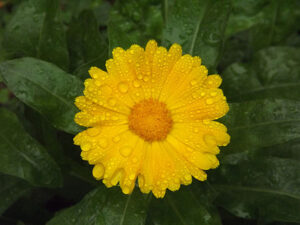Achieving Health and Beauty
Achieving health and beauty from the outside-in is impossible. Here’s why.
The human body is made up a 50 trillion cells. Every second each cell in your body coordinates billions of chemical reactions. Every day your heart beats 100,000 times pumping 7,500 litres of blood through 59,520 miles (96,000 kms) of vessels if you’re a child. 100,000 vessels if you’re an adult through three different kinds: arteries, veins, and capillaries. Every month you completely regenerate your outer layer of skin.
Did you just catch that? Every month we completely regenerate our outer layer of skin. Once we start taking better care of our self and health we see an immediate difference in our skin.
What does that mean, self-care? And how can we start taking better care of our health, from the inside-out, to see that beautiful reflection of health in our skin? It is different for everyone.
Love The Skin You’re In
Using our skin as a barometer is one way to identify our state of internal health and areas of imbalance. It is literally a window into your health. Many dermatologists agree that some serious conditions are first detected through the skin. The skin has three layers. The cells that end up on the outside of our body are actually born at the second layer of the skin. This is called the epidermis. When the cells are new, they are birthed into an nutrient-rich environment or deficient. This inner terrain may contain some, none, or many of the nutrients needed to feed these skin cells. Regardless of what is present, they need the proper nourishment. And that’s the information our cells pick up on.
Skin cells are picking up on hormonal information too. To put it simply we could divide hormones into two simple categories: love hormones or fear hormones. Once they reach this stage, cells migrate outwards and form the outer layer of skin. As soon as they hit the external environment, they start oxygenating, and die.
Every three months we completely replace our own blood supply. Blood is the way oxygen travels through our body carrying nutrients.
Here Are Some Other Interesting Facts
- About 50% of bone mass is built between the ages of 12 – 18.
- Every 3 months you completely rebuild and replace your blood supply.
- Every 10 years adults completely rebuild and remodel every bone in their body (essential
- vitamins and minerals are calcium, magnesium, manganese, boron, vitamin D)
- Children rebuild their skeleton every year
- Teens accrue 50% of adult bone mass between 12-18 years of age.
So, in order to achieve great looking skin we need to take care of our internal health first. For building beautiful, nutrient rich, and flawless skin we need to strike a new balance providing the body with what it needs. This means tending to our internal garden or inner terrain.
For example, we might ask ourselves, “What are the substances that interfere with my body’s absorption of calcium?” Taking a closer look at these substances will help us understand how they interfere with the bloods ability to take the nutrients from the blood and incorporate it into the bone. Using calcium as our example we find, phosphorous, also known as phosphoric acid and phosphate, phosphorous, which is in soda and many processed foods, can interfere with calcium absorption.
So how can we increase calcium absorption? With natural remediation. Understand the unique differences between insoluble fiber, which also hinders calcium absorption. This type of fiber, such as the kind in wheat bran, reduces calcium absorption.
Helping calcium absorption by getting enough vitamin D. This also helps the kidneys break down and incorporate (absorb) calcium that would otherwise be excreted. Vitamin D is found in eggs, butter, fatty fish, and liver. It is also found in fortified foods such as milk, orange juice, and cereal.
This is new level of nutrition. The whole concept of beauty from the outside in – transform into a powerful way to nourish ourselves.
Recommended amounts daily calcium: 1,000 mg for adults and children aged 4 years and older. Foods providing 20% of more of the daily value are considered to be high sources of a nutrient. But foods providing lower percentages of the daily value also contribute to a healthful diet.
Find Our What Your Body Really Needs
When we nourish ourselves properly, including kindness towards ourselves and others, it can be truly transformative. Using nutrient dense foods, creates a lasting impact, not only on our skin, but on the prevention of degenerative disease. Because our skin is a window into our internal health, its important to pay attention to it and care for it properly – including responding to any unusual skin symptoms.
Here Are A Few Types Of Skin Responses You’ll Want To Pay Attention To:
In some cases skin can show signs of internal disease before it advances and becomes serious. In other cases, a symptom is noticeable on the skin long after the disease begins causing damage internally. There are many subtleties of the skin that could spell trouble, but a handful of general skin changes commonly signal an internal disease.
A New Rash: Unusual rash, or a rash that does not respond to treatment or is accompanied by fever, joint pain, muscle aches, or other symptoms could indicate an internal problem or infection.

From the American Academy of Dermatologists, “A rash occurring on the tops of the feet and lower legs that does not respond to topical steroids or antifungals can be a sign of hepatitis C infection (necrolytic acral erythema).”
Occasionally, people will develop a rash from an allergy to a new medicine. However, it is important to monitor the rash carefully. It could be a sign of a more serious condition known as DRESS syndrome. This stands for Drug Reaction (or Rash) with Eosinophilia and Systemic Symptoms.
In addition to unusual rashes skin can be a predictor in other forms of illness including growths, skin discoloration, and change in texture. To learn more about warning signs of the skin go to the American Academy of Dermatologists website here.
Caring for Your Blood
Although red blood cells live the longest, they are all brand new every 120 days.
Healthy blood is the way oxygen travels through our body so, when we make changes keeping our own body’s processes in mind, we can make an immediate impact on the quality and health of our blood with far reaching effects. Too few of us are getting the essential nutrients necessary for optimum cellular nutrition: to build, protect, maintain, and restore.
This is the key to understanding incremental change and long term healthy cellular regeneration, which leads to beauty from the inside, out. Nutrition influences not only the health of our skin, but our quality of life, vitality, prevention of illness, and moods. Here’s a recipe for a lovely skin cream we developed at my herbal apprenticeship near Olympia, Washington.
The Perfect Cream
How to make the perfect cream for supporting the precious skin your in!
- Calendula
- Dandelion
- Coconut Oil
- Cocoa Butter or Shea Butter
- Gotu Kola
- Plantain
- Comfrey



This beautiful emollient cream is an adaptation from Rosemary Gladstar’s Perfect Cream. The combination of water and oil combine with nourishing, anti-inflammatory, ingredients such as gotu kola, calendula, dandelion, and comfrey’s soothing, strengthening, and firming properties from the compound allantoin.
If you’ve never made your own lotion before this is the perfect time to make your own cream.
Remember, the key to emulsifying any oil and water based cream is to make sure your temperatures are both at room temperature before combining. By making your own cream you can prepare custom ingredients for whatever nourishment your skin needs. For this cream, we chose these ingredients:
Calendula: Is a genus of about 15 – 20 species in the daisy family, Asteraceae. Also known as “marigold”, they grow wild (Calendula arvensis). Calendula can also be easily propagated and cultivated in the home garden. Calendula is a modern Latin derivative of calendae, meaning “little calendar”, “little clock” or possibly “little weather-glass”.[4] The common name “marigold” [4] refers to the Virgin Mary. The most commonly cultivated and used member of the genus is the pot marigold (Calendula officinalis). This calendula for this cream is derived from C. officinalis.
Properties: anti-inflammatory wound healer, stops bleeding, and prevents infection. Herbalists use the entire flower head, not just the petals, in preparations for healing cuts, scrapes, burns, diaper rash, sores, ulcers, varicose veins, chapped skin and lips, and insect bites.
As with other members of the daisy family, some people are sensitive to calendulas because of the sesquiterpene compounds that the plants contain.
If you tend to have allergic skin reactions or are sensitive to certain foods, start with a low dose of this herb and work up to a full dose if you don’t experience any reaction.
Dandelion (Taraxacum officinale): Are chock full of vitamins A, B, C, and D, as well as minerals, such as iron, potassium, and zinc. Dandelion oil heads are soaked in olive oil and used to add essential vitamins and minerals to our cream.



Comfrey (Symphytum officinale): is also called “knitbone,” “slippery root,” “bruisewort,” and “blackwort.” The plant contains the small organic molecule allantoin. This stimulates cell growth, repairs, while also depressing inflammation.
Plantain: Often considered a common weed, plantain is practically a miracle healer. It has anti-microbial properties. It is an anti-fungal and analgesic. Herbalists use plantain internally and externally for treating blood poisoning, infections, and as a laxative.
How to make it:
Creams are made of a fifty-fifty portion. This is a (50%-50%) ratio of water to oil. Choosing ingredients with the best properties for your exact needs is what makes this recipe so versatile. Additionally, you will use infusions of herbs, oils, and tincture. With a little research, you can determine what actions the herbs have in terms of understanding how to pick the best herbs for your exact skin.
Supplies Needed: Herbal Infused Oil (Dandelion, Calendula, Comfrey), Water: herbally infused or naked, Aloe, Witch Hazel or Vinegar, Beeswax, Lanolin, Double Boiler, Measureing Cup, Blender, Spoon or Rubber Spatula, Jars.
Combine the water and oil portions separately follow the directions below. Rosemary suggests a ratio of 1 part water to 1 part oil when making her perfect cream. The oils should equal 3/4 cup liquid oil to 1/3 cup solid oil (i.e. cocoa butter, coconut oil, Shea butter, beeswax, and lanolin).
Water Portion:
2/3 cup distilled water (or tap water): infuse or decoct your herbs of choice.
1/3 cup Aloe Vera Gel witch hazel can be substituted to produce a more tissue toning cream, or vinegar can be used if making an anti-itch eczema or psoriasis cream.
1 or 2 drops essential oils of choice (you can use 5 – 10 drops per ounce) this helps make a stronger preservative action and a pleasant smelling cream.
Oil Portion:
3/4 cup apricot, almond or grapeseed oil (infused with herbs)
1/2 cup coconut oil, cocoa butter, or shea butter*
1/4 teaspoon lanolin, use a tad less than 1/2 tsp then using only 1/2 oz beeswax
1/2 to 1 ounce grated beeswax: if using 1/2 oz. of beeswax nearly double the amount of lanolin
When melting down Shea butter, melt down fixed oil first, then add least amount of heat. Then, refridgerate the oil to bring it to room temperature.
Crystal Hamby of Green Blessings also recommends substituting hydrosols, the water left over from the steam distillation of essential oils,k for the water portion. And oils that are high in fatty acids like rose hip seed oil, borage seed oil, black currant seed oil, pumpkin seed oil to the oils portion of your cream.
When adding hydrosols and oils high in essential acids, add them off heat. You will lose the aromatic quality of the hydrosol to heat. Also, oils high in essential fatty acids degrade easily at high temperatures.
To read the full recipe and instructions click here.




